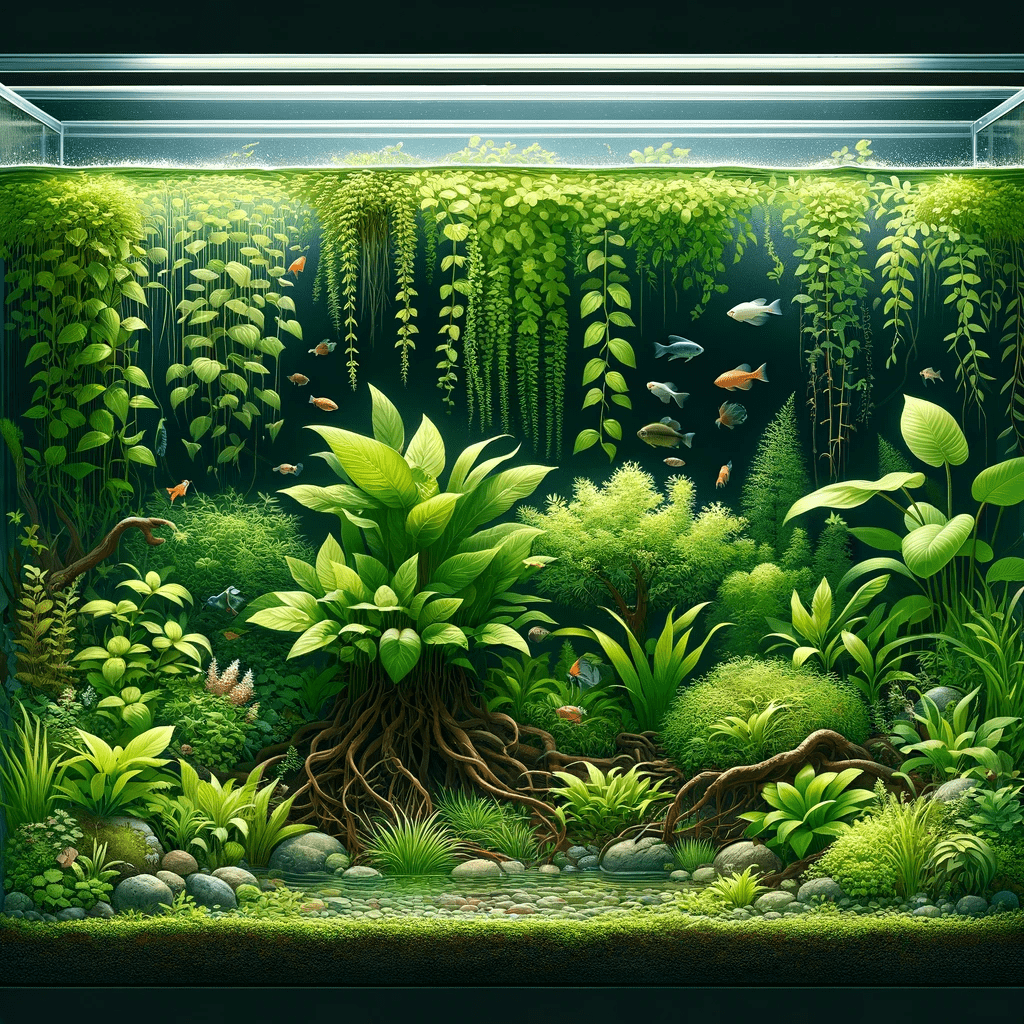Blog Post: Using Live Plants in Your Aquarium: Nature’s Filter
Harnessing the Power of Live Plants for a Natural Aquarium Filtration System
In the quest for a pristine aquatic environment, aquarium enthusiasts often turn to mechanical and chemical filters. However, one of the most effective and natural solutions lies in the use of live plants. Dubbed as nature’s filter, live plants offer a sustainable and aesthetically pleasing way to maintain water quality and promote a balanced ecosystem. This blog post delves into the benefits of using live plants in your aquarium and how they contribute to a healthier habitat for your aquatic pets.
The Role of Live Plants in Natural Filtration
Live plants play a crucial role in the aquatic ecosystem by absorbing harmful substances, such as nitrates, phosphates, and ammonia, through their leaves and roots. These substances, which result from fish waste, decomposing organic matter, and uneaten food, can be toxic to fish if allowed to accumulate. Plants use these compounds as nutrients, effectively purifying the water and reducing the reliance on mechanical filtration systems.
Benefits of Using Live Plants in Aquariums
- Improved Water Quality: By absorbing excess nutrients, live plants help prevent algae growth and maintain clear water.
- Oxygenation: Through photosynthesis, plants release oxygen into the water, providing an essential element for your fish to thrive.
- Natural Habitat: Aquatic plants create a more natural and comfortable environment for fish, offering hiding spots and reducing stress.
- Aesthetic Appeal: Live plants add beauty and depth to your aquarium, creating a visually appealing aquascape that mimics the natural world.
Selecting the Right Plants for Your Aquarium
Choosing the right plants for your aquarium is essential for successful natural filtration. Some of the best plants for this purpose include:
- Anubias and Java Fern: Low-maintenance plants that can thrive in a variety of water conditions.
- Water Wisteria and Hornwort: Fast-growing plants that are excellent at absorbing excess nutrients.
- Duckweed: A surface plant that is highly effective at removing toxins, though it should be used sparingly to avoid covering the entire surface.
Tips for Incorporating Live Plants into Your Aquarium
- Substrate Choice: Opt for a nutrient-rich substrate that will support root growth and plant health.
- Adequate Lighting: Ensure your aquarium has sufficient lighting to support photosynthesis, but not so much as to encourage algae growth.
- Regular Maintenance: Prune dead leaves and manage plant growth to keep your aquarium tidy and maintain effective filtration.
Conclusion: Embracing the Elegance and Efficiency of Nature’s Filter
Incorporating live plants into your aquarium is not just about enhancing its beauty; it’s about embracing a holistic approach to aquarium care. Live plants offer a sustainable and efficient way to maintain water quality, enrich the lives of your aquatic pets, and create a thriving ecosystem. Whether you’re a seasoned aquarist or new to the hobby, the use of live plants as nature’s filter is a step towards a more natural, healthy, and vibrant aquarium.
By understanding the vital role of live plants in the aquarium ecosystem, you can harness nature’s filter to create a healthier and more aesthetically pleasing environment for your aquatic companions. Share this knowledge with fellow aquarists and encourage the adoption of live plants in aquariums for a sustainable and thriving aquatic world.


